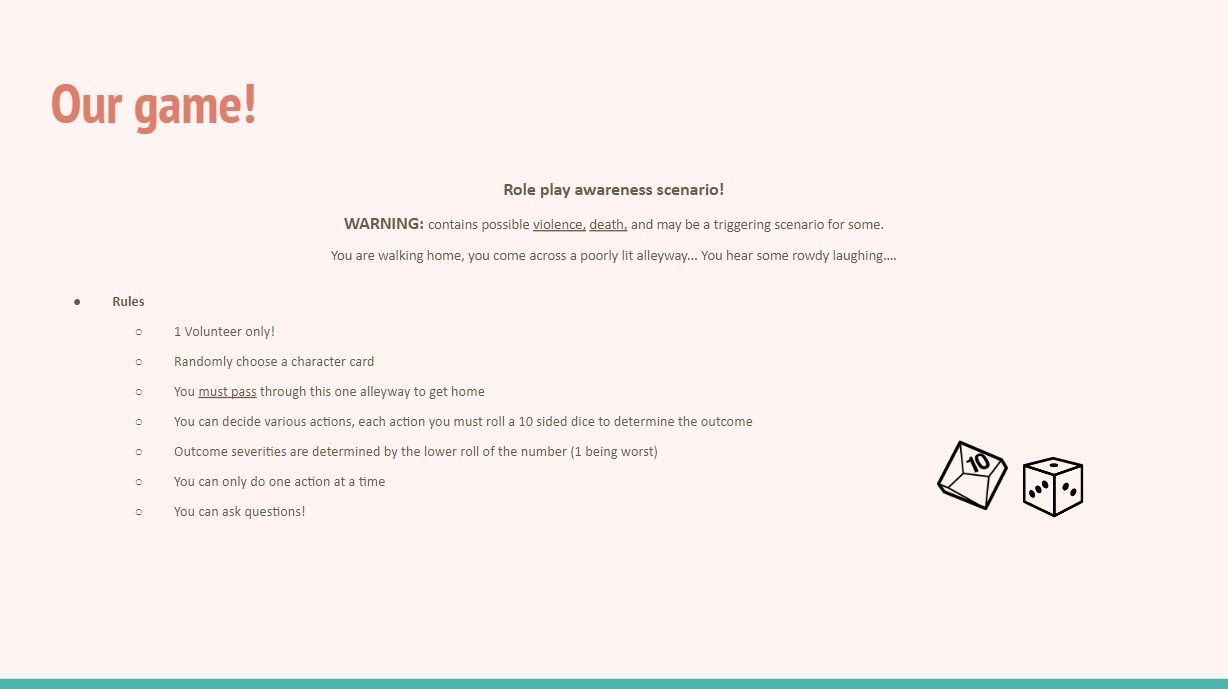Manifesto
Individual
The way we perform our perceived gender is partially learned behavior.
Often we do not realize this ourselves until we start questioning why we act the way we do.
In public it can be harmful or even dangerous to deviate from such gender norms.
Individuals should be allowed to behave the way they want to without being assigned gender labels.
Group
The way we perform our perceived gender is partially learned behavior.
Often we do not realize this ourselves until we start questioning why we act the way we do.
What does it do to one's mental health when their body is forced to be publicly expressed?
Practice - Research
Our manifesto quickly narrowed down our interests. It became apparent that we're interested in learned behaviors and how these behaviors impact our mental health as we always have to express our gender publicly.
The graph to the right is from a gender dissidents survey put together by a cis woman named Maya Forstater. Though the results of the survey itself are with a clear bias in mind - there is no denying that many still do not dare to address these issues related to gender as they fear the potential public consequences this may have. There lies the first issue. The way we express our gender cannot be hidden like these views or opinions.
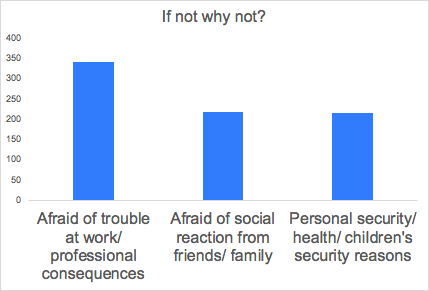
Where does this learned behavior come from?
Learning a gender starts as early as one's childhood. Sociologists call this "gender socialization". We constantly learn how to successfully belong to new social groups. It is nearly a necessity to do so. Gender socialization is an individual's own journey. They learn about the gender norms of their society and this is how they end up with a gender identity through others around them. Children are more prone to imitation & mimicry.
Adults selectively reward and punish certain behaviors so children come to adapt to them. Sociologists identified specific sex-typed behaviors. This is where we get into gender norm territory. Society purposely categorizes behaviors and associates certain behaviors with masculinity or femininity. A child is pushed by rewarding behaviors that fit with their assigned sex at birth (solely determined by a baby's genitals). A simple sex-typed behavior is crying. Little girls get comforted when they cry. Little boys get told that boys do not cry.
One specific example that got us rolling is when we questioned how we learn to walk. How can something as simple and daily as walking even be associated with a gender? That was one of the initial discussion points for our project. Apparently walking has a lot to do with postures and postures carry a lot of societal meaning. Postures are drawn from both everyday life observations & media. A type of behavior that is passed along too!
Kramp, C. (2008). Performing gender in postures. Tele-vizion, 21, 52-53.
Ryle, R. (2012). How do we learn gender: gender and socialization. Questioning gender: a sociological exploration, 119-168.
Vrugt, A. & Luyerink, M. (2000). The contribution of bodily posture to gender stereotypical impressions. Social Behavior and Personality: an international journal, 28(1), 91-103.
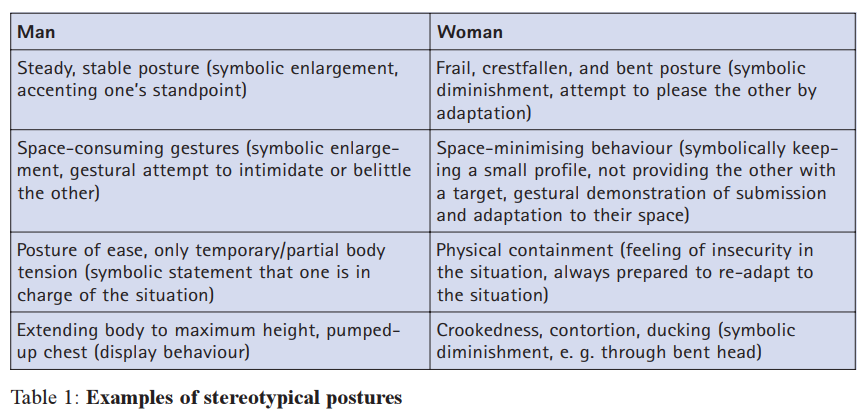

Theory - Documentation
The first phase is what I'd like to call the selection phase. I begin by scanning the titles and asking myself which text could possibly be about gender. "Image Matters" for example sounds like it could be about one's appearance. Your appearance is inevitably tied to how people perceive you. Usually in a binary sense: man or woman. I realized I was very wrong once I went through the pages and noticed terms referring to race instead: Black & European. Now this isn't a bad thing per say. I could still find a relatable quote within a text that is about either race or sexuality. There is a lot of overlap between these social topics after all but I'd prefer to focus on a text that is mainly about gender. I believe this way I'll process more information better. Yet I still accidentally ended up reading more than what was necessary. Sheer curiosity?
Ties to mental health
Research concerning the mental health of gender non-conforming people has been far and few between. Queer studies up until this point mostly discuss sexuality.
Over 7000 people responded to a new survey in 2011. The survey contained roughly 70 questions about every aspect imaginable that targets discrimination such as employment and health care. 55% reported losing their jobs due to bias for example. Another survey from the United States in 2018 then acknowledged that this issue and discrimination in finding suitable help are still relevant! The health of gender non-confirming people are not recognised in public which makes it all the harder.
The worst has yet to be revealed. The national transgender discrimination survey report on health and health care furthermore shows significantly increased risks of depression, isolation, poor self-esteem, and worst of all: suicide. Transgender people have a seriously high rate of suicide attempts as shown to the right.
There is a daily invisible struggle. An uphill battle. One that deserves more visibility.
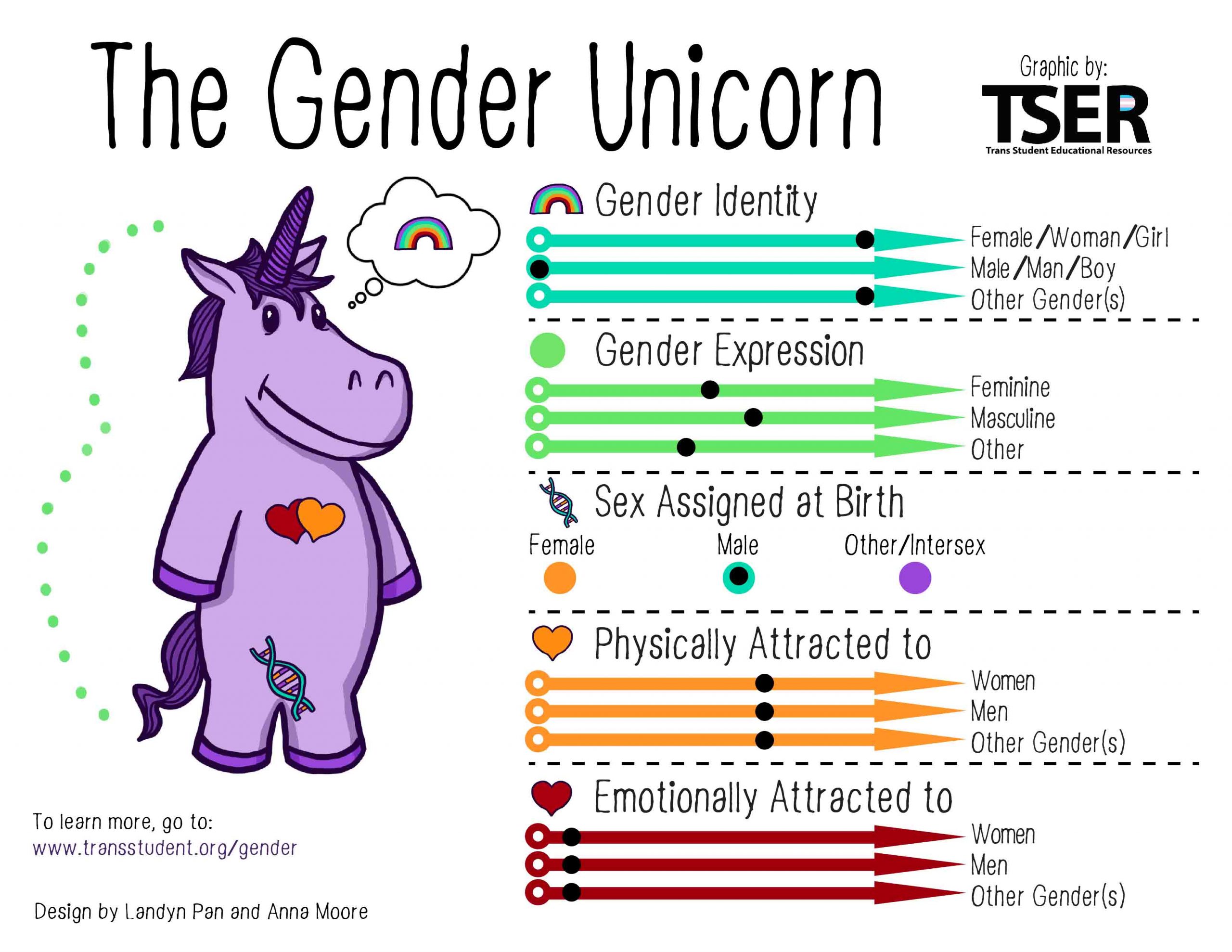
Christian, R. Mellies, A. A. Bui, A. G. Lee, R. Kattari, L. & Gray, C. (2018). Measuring the health of an invisible population: lessons from the Colorado Transgender Health Survey. Journal of general internal medicine, 33(10), 1654-1660.
Grant, J. M. Motter, L. A. & Tanis, J. (2011). Injustice at every turn: A report of the national transgender discrimination survey.
Process
As the illustrator of my group I was tasked with providing the visual material for our little interactive game. I started by looking up references of dark alleyways. It had to be menacing but not too dark so one could still see the silhouettes of the dangerous group of men between the colors.
We decided early on to work with silhouettes only because it is unlikely that a victim would look these people in the eyes. People tend to judge by shapes and postures. Body language is important as shown in the research by Vrugt & Luyerink.
Quotes
1. “We argued that sexual orientation was not the only significant way to differ from heteronormativity – that homo, hetero and bi in fact all depended on similar understandings of ‘man’ and ‘woman’, which trans problematized. People with trans identities could describe themselves as men and women, too – or resist binary categorization altogether – but in doing either they queered the dominant relationship of sexed body and gendered subject” (Stryker 201).
2. “I never wanted the flesh. How it never fails to fail so accurately. But what if I broke through the skin’s thin page anyway & found the heart” (Vuong 36).
3. “There is no interlocutor to remind you that the pain is real, someone to say ‘I felt that’. Without this intermediary, the images are presented as brutal truth” (Kroell).
4. “She wanted her son to go there as well, but because of affirmative action or minority something – she is not sure what they are calling it these days and weren’t they supposed to get rid of it? – her son wasn’t accepted. This exchange, in effect, ends your lunch” (Rankine 13).
5. “Trans women were not addressed as sisters; male children, in some cases, were disallowed. I have been sexually harassed, coerced, assaulted; I can understand male-ness as a threat, and its absence as a possibility” (Winant).
6. “In fact, the culture of Paris Is Burning has become so pervasive and embedded that many people no longer realize that these forms and styles originated with Black trans and queer people. Paying attention to the ordinary joy, pleasure, and boredom of marginalized lives can help address the constant flattening of social differences, as well as the appropriation and exploitation of people and cultures” (Gonsalez).
7. “But in this era of ‘women can be anything’ there’s an impulse to stick up for personal agency. Tracing that line back in history is important, but you also want to give room for freedom of expression, no? Rankine: It’s still a choice. One of the terms we’re using is complicit freedom. We’re all capable of making this choice and doing what we want, but what happens when what we want matches up with a kind of complicity around what is valued?” (Regensdorf).
8. “The straight men were the ones who most insistently enunciated the doctrine of ‘do your own thing’ and ‘it’s all free’ and ‘don’t tamper with the good vibes.’ We began to feel that this hippy ideology was a cover for privilege and power and laziness and irresponsibility. We felt like we were doing most of the work and we were paying for all of it. They were being taken care of” (Mitchell and Asta 20).
9. “Mean streets and dark alleys. Road names and statues of men. From the physical to the metaphorical, the city is filled with reminders of masculine power. And yet we rarely talk of the urban landscape as an active participant in gender inequality” (Kern).
10. “Socially engaged art functions by attaching itself to subjects and problems that normally belong to other disciplines, moving them temporarily into a space of ambiguity. It is this temporary snatching away of subjects into the realm of art-making that brings new insights to a particular problem or condition and in turn makes it visible to other disciplines” (Helguera 5).
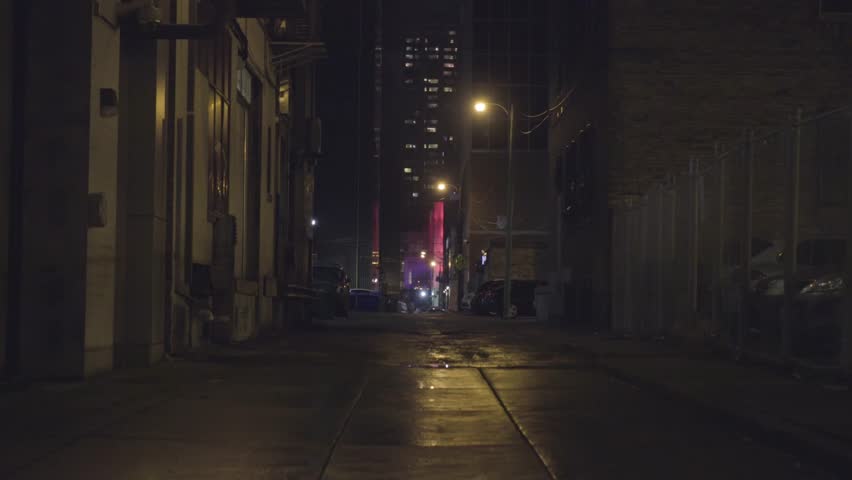


After that I looked up references of drunk people or poses that signal some type of dominance or an intimidating presence. Again here are some of my favorites I found while drawing.
Illustrations
When it comes to environments I sketch by filling in shaped colors first and fill in the details later. The sketch goes very fast and I used photorealistic references to set the mood and lighting. Some parts are still blurry and it's hard to make out what is what. I feel like that's not too important though. The message is that it's a shady street.
The character cards were done in a very different style. No sketch was necessary for these. I started with the lines right away and mainly looked at photographs of clothing articles at this point. Colors after.
All of the three characters needed to have obscure features that make it hard to define their gender from the outside.
These characters are all gender non-conforming people. Some further into transitioning than others. This is paired with often baggy or unisex clothing choices. We blurred out the skin to put more of a focus on gender and not race.
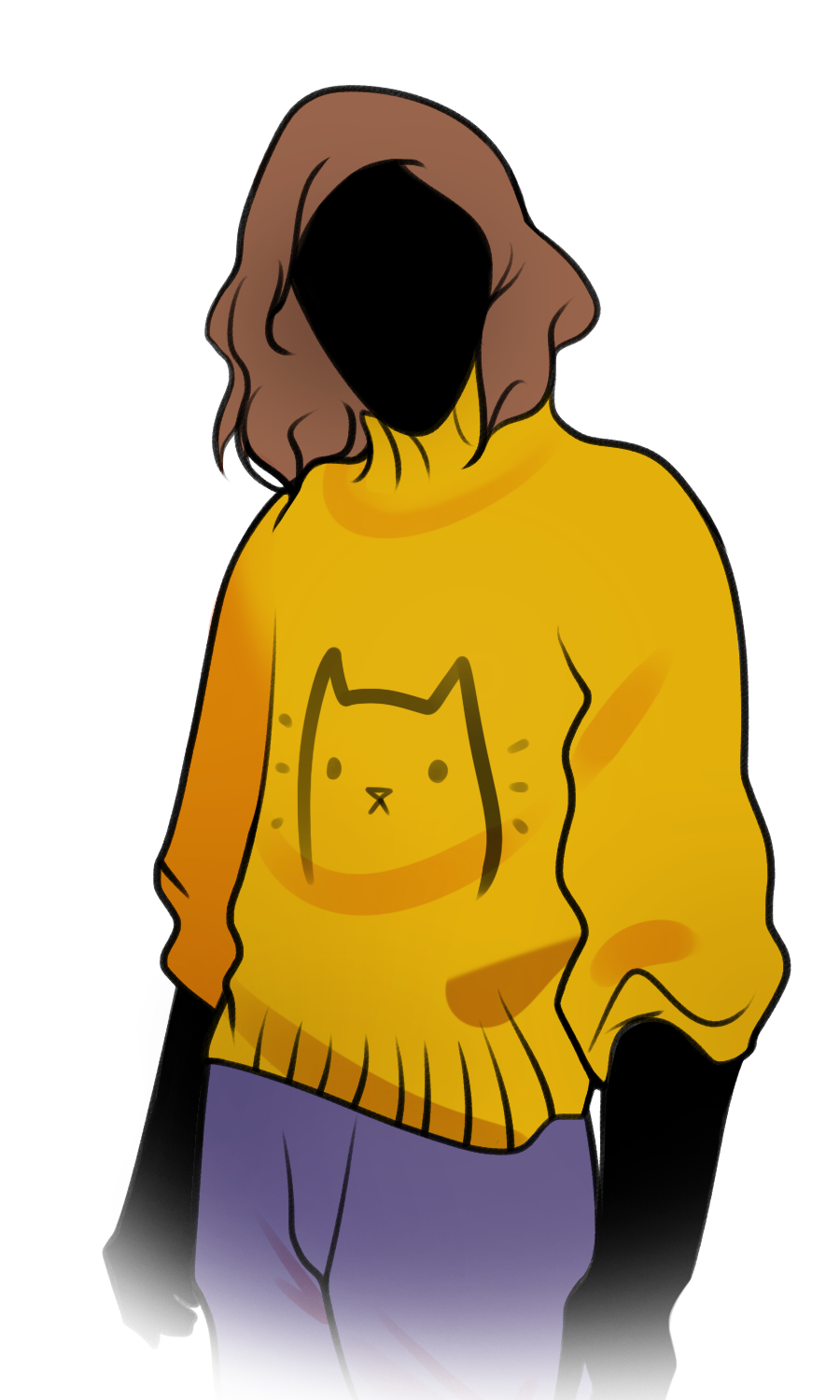


Works Cited
Gonsalez, Marcos. “Paris Doesn't Always Have To Be Burning.” Public Books, 14 September 2020, publicbooks.org/paris-doesnt-always-have-to-be-burning/.
Helguera, Pablo. "Socially engaged art." New York: Jorge Pinto Book, 2011.
Kern, Leslie. “Upward-thrusting buildings ejaculating into the sky – do cities have to be so sexist?” The Guardian, 6 July 2020, theguardian.com/artanddesign/2020/jul/06/upward-thrusting- buildings-ejaculating-cities-sexist-leslie-kern-phallic-feminist-city-toxic-masculinity/.
Kroell, Alicia. “Carmen Winant’s Radical Images of Women Giving Birth.” Hyperallergic, 7 June 2018, hyperallergic.com/446229/carmen-winant-my-birth-moma-spbh-editions/.
Mitchell, Larry, and Ned Asta. The faggots & their friends between revolutions. New York: Calamus Books, 1977.
Rankine, Claudia. Citizen: an American lyric. Graywolf Press, 2014.
Regensdorf, Laura. “Why Blonde Privilege Is Real, From Barbie to the White House.” Vogue, 24 July 2018, vogue.com/article/claudia-rankine-john-lucas-stamped-blonde-hair-color-race-brooklyn- new-york/.
Stryker, Susan. "Transgender history, homonormativity, and disciplinarity." Radical History Review 2008.100 (2008): 145-157.
Vuong, Ocean. Night Sky with Exit Wounds. Copper Canyon Press, 2016.
Winant, Carmen. Notes on Fundamental Joy: Togethering. Printed Matter, Inc., 2019.
